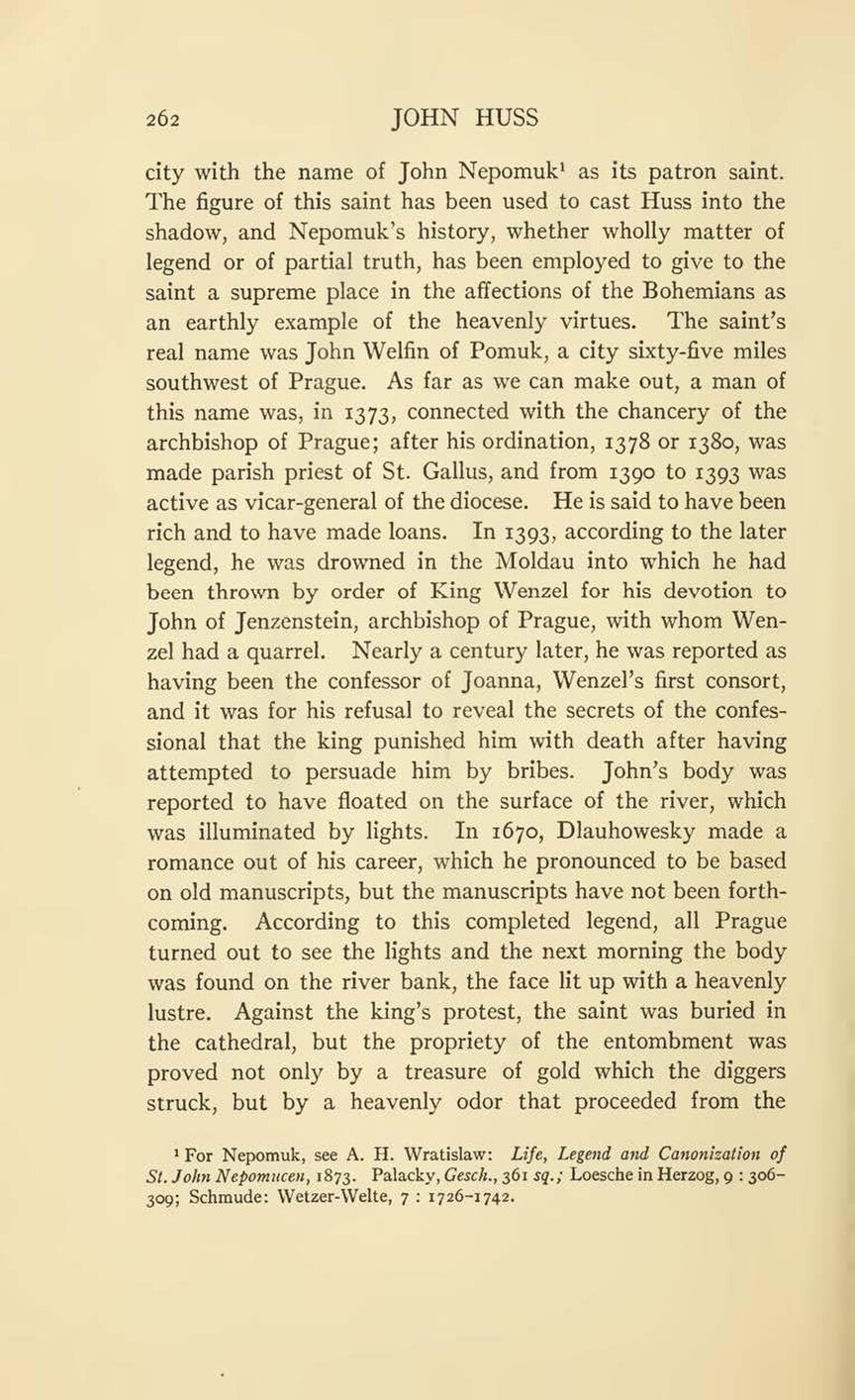city with the name of John Nepomuk[1] as its patron saint. The figure of this saint has been used to cast Huss into the shadow, and Nepomuk’s history, whether wholly matter of legend or of partial truth, has been employed to give to the saint a supreme place in the affections of the Bohemians as an earthly example of the heavenly virtues. The saint’s real name was John Welfin of Pomuk, a city sixty-five miles southwest of Prague. As far as we can make out, a man of this name was, in 1373, connected with the chancery of the archbishop of Prague; after his ordination, 1378 or 1380, was made parish priest of St. Gallus, and from 1390 to 1393 was active as vicar-general of the diocese. He is said to have been rich and to have made loans. In 1393, according to the later legend, he was drowned in the Moldau into which he had been thrown by order of King Wenzel for his devotion to John of Jenzenstein, archbishop of Prague, with whom Wenzel had a quarrel. Nearly a century later, he was reported as having been the confessor of Joanna, Wenzel’s first consort, and it was for his refusal to reveal the secrets of the confessional that the king punished him with death after having attempted to persuade him by bribes. John’s body was reported to have floated on the surface of the river, which was illuminated by lights. In 1670, Dlauhowesky made a romance out of his career, which he pronounced to be based on old manuscripts, but the manuscripts have not been forthcoming. According to this completed legend, all Prague turned out to see the lights and the next morning the body was found on the river bank, the face lit up with a heavenly lustre. Against the king’s protest, the saint was buried in the cathedral, but the propriety of the entombment was proved not only by a treasure of gold which the diggers struck, but by a heavenly odor that proceeded from the
- ↑ For Nepomuk, see A. H. Wratislaw: Life, Legend and Canonization of St. John Nepomucen, 1873. Palacky, Gesch., 361 sq.; Loesche in Herzog, 9: 306–309; Schmude: Wetzer-Welte, 7: 1726–1742.
